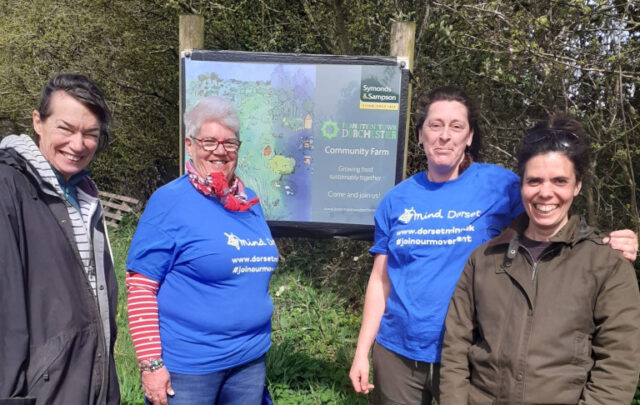Is urban farming Detroit’s cash cow?
John Gallagher, Free Press
Community gardeners in Detroit harvest a good deal of fruits and vegetables each year, but not much of that other type of green: profit.
This year, though, Detroit’s small-scale, volunteer urban farm movement will see the most dramatic steps yet toward making urban farming an economically viable industry.
These steps promise that within the next few years, urban growers in Detroit will produce jobs and a tax base along with their salad greens.
Among those efforts are RecoveryPark and Hantz Farms, two proposals to farm Detroit’s vacant spaces at a scale unknown now, up to 2,000 acres or more each — that’s twice the size of Belle Isle.
Meanwhile, the nonprofit Greening of Detroit this year plans to open Market Garden, a two-acre site near Eastern Market to train would-be career urban farmers how to operate like a business.
And New York activist Majora Carter continues to map plans in the city for a pilot program for a worker-owned farming cooperative.
Those involved say 2010 will be the critical year to get these efforts in the ground instead of just talked about.
“I think it’ll move from a theory to a reality this year,” said Michael Score, president of Hantz Farms…
(21 March 2010)
Looming citrus disease could annihilate county’s trees
Stephanie Hoops, Ventura County Star
Agricultural officials are going all out to stop a rapidly approaching pest that threatens to annihilate citrus trees in Ventura County and the state.
County Agricultural Commissioner Henry Gonzales and John Krist, CEO of the Farm Bureau of Ventura County, went before the county Board of Supervisors on Tuesday morning to stress the urgency of the threat posed by the small insect called the Asian citrus psyllid.
“This is without a doubt the most serious threat Ventura County agriculture has ever faced,” Krist said. “I’m not exaggerating.”
Asian citrus psyllids are blotchy brown and about the size of a pea. They feeds on all types of citrus trees, usually on the underside of leaves. Those that have a bacterial disease — known as citrus greening, Huanglongbing or yellow dragon disease — destroy the trees.
Krist and Gonzales said if diseased psyllids get to Ventura County, they could devastate the citrus industry, which generates 7,000 local jobs, $510 million a year in economic activity and $19 million in tax revenue…
(16 March 2010)
The Great Sustainability Debate: Meat Or No Meat?
Megan Meyer, Earth Eats
Good Magazine published the first post in what I hope will be a long running series called Reasonable People Disagree. The premise is that they select two rationally-thinking people on opposite sides of an issue and print their dueling essays.
This iteration, which is worth reading in its entirety, is about meat consumption and sustainability. But for those of you who want a Readers’ Digest version of the debate, I thought I would lay out some of the highlights.
Pro-Meat
Nicolette Hahn Niman is an attorney and activist for improving conditions on farms. Her husband is founder of Niman Ranch, on which animals are raised, and she is the author of Righteous Porkchop.
Niman says that modern animal farming practices are to blame, not animal farming itself. She explains how the debate is dominated by two extremes: agribusiness who strive to maintain the status quo and vegan activists fighting to get rid of animal farming altogether.
One of the industry ills is the concentration of farm animals. When animals and animal farms are not placed so close to one another, Niman argues that they play an important role in the recycling of nutrients in their ecosystems.
What the United Nations’ report fails to take into account is the difference between traditional and modern methods. Highly deleterious practices like clear-cutting rainforests in Brazil and the use of nitrous oxide-rich manmade fertilizers should be considered separately.
Niman also contends that that pasture land actually helps to absorb excess carbon dioxide – the atmospheric gas whose surplus is responsible for the greenhouse effect. However, while her essay is nicely ornamented with linked to reputable studies, she does not provide a reference for this last claim.
Anti-Meat
Lindsay Rajt is a long-time vegetarian and leads grassroots campaigns for the People for the Ethical Treatment of Animals. Among those campaigns are KFC’s treatment of chickens and conditions for horses at the Kentucky Derby.
Rajt takes the position that we should give up consuming animals altogether. Her initial argument focuses on the emotional relationships humans have with animals, and the relationships they form among themselves.
She points out that raising animals in order to kill them is easily equated to slave-ownership.
But Rajt also tackles more tangible issues. For example, she states that the modern American diet and Niman’s proposed changes in farming practices cannot match up logistically.
She says that the 10 million animals used every year for food in the United States requires the very existence of the modern factory-style farms Niman demonizes.
Rajt does not shy away from the well-worn arguments that animal farms produce huge quantities of greenhouse gases and that third-world countries could ease their hunger crises with the widespread adoption of vegetarianism. After all, many calories that could be used for hungry humans are wasted in the production of meat.
Who has the stronger argument? Can meat consumption become more eco-friendly if farming practices are improved? Or should we try to eliminate meat products from our diet to conserve resources and reduce pollution?
(19 March 2010)
The London Orchard Project: bringing fruit to car parks
Jason Gleeson, the ecologist
Fruit consumption levels in London are woeful, and as a nation we import huge amounts from abroad. Why not grow more, closer to home, amongst the communities that will most benefit?
Every year between June and October, the Hackney Marshes in north-east London are covered with sweet, luscious blackberries. Families bring buckets and collect the free harvest, turning the berries into jams, smoothies and many other recipes. They are so abundant that most of the succulent berries are never picked.
Yet larger supermarkets will sell blackberries for as much as £3 for a small handful, and people will buy it. Most Londoners don’t know about this abundance and have never had this close a relationship with their food and local wildlife. The London Orchard Project aims to change all this…
(17 March 2010)
Don’t confuse manure tea with Earl Grey
Jan Norman, The Orange County Register
The Haven family has been farmers and ranchers in Southern California for 100 years. Annie Haven would like to carry on that life and business but it’s not easy as the region attracts more development.
That’s why she came up with the idea to sell manure teabags.
Annie Haven, owner of Authentic Haven Brand, shows some of the manure bags that she offers. The bags, which don’t smell, are steeped in water like a teabag and the water is used to condition soil. The flowers beside her came from her garden in Murrieta.
Annie Haven is a bridge between Orange County’s agricultural past and its suburban and high tech present. On one side of the bridge, her small business, Authentic Haven Brand in San Juan Capistrano and Murietta is a livestock business with between 12 and 160 head depending on the availability of water and other resources. On the other, the business is an e-commerce Web site and wholesaler.
“American farmers and ranchers as far back as I can remember have never had just one business,” Haven said. “You cut off dead limbs and sell it for firewood, recycle scrap to sell.”
And then there are the manure teabags that Haven calls “a value-added byproduct of my livestock business.”
They are also a profit center created out of necessity.
Haven raised cattle in southern Orange County and northern San Diego County with her father for more than 40 years. She still considers livestock to be her primary business, even though her dad died in a car accident in 2003. Haven breeds and sells cattle, but prolonged periods of below-average rain had left her with too few head of cattle to live on, so she started commercializing the natural soil conditioner that’s a part of cattle ranching.
Haven didn’t invent manure tea.
“My grandmother brewed manure tea,” said Haven, most of whose family is still in ranching and related industries farther north…
(17 March 2010)
thanks to kalpa for this very “down-to-earth story!”-ks
China faces ‘diabetes epidemic’, research suggests
Stuart Staniford, BBCnews
China faces a diabetes epidemic, with almost one in 10 adults having the disease while most cases remain undiagnosed, researchers have said.
Tests showed diabetes was more endemic than previously thought, according to the New England Journal of Medicine.
The figures suggest China has some 90 million diabetics, far more than India.
Rapid economic growth has affected public health, through urbanisation, changed diets and more sedentary lifestyles, researchers said.
Rigorous new tests suggested that more than 92 million Chinese adults had diabetes and that nearly 150 million more were showing early symptoms, researchers said.
This represents a major public health problem for the authorities in Beijing as diabetes is a major factor in illnesses such as heart disease, stroke and kidney disease, correspondents say.
“In the last 10 years, with the country’s economy expanding quickly and people’s standard of living improving, people’s lifestyles have changed,” said Yang Wenying, one of the report’s 20 authors, who is head of endocrinology at Beijing’s China-Japan Friendship Hospital.
“China’s economic development has gone from a situation of not being able to eat enough, of poverty, to having enough food and warm clothes, and doing much less exercise,” she told the AFP news agency…
(25 March 2010)
Big food push urged to avoid global hunger
Richard Black, BBCnew
A big push to develop agriculture in the poorest countries is needed if the world is to feed itself in future decades, a report warns.
With the world’s population soaring to nine billion by mid-century, crop yields must rise, say the authors – yet climate change threatens to slash them.
Already the number of chronically hungry people is above one billion.
The report was prepared for a major conference on farming and development that opens next week in France.
The first Global Conference on Agricultural Research for Development (GCARD) will bring scientists, policymakers, aid experts, businessmen and pressure groups together in an attempt to plot a way out of the hunger crisis.
“It’s a huge problem,” said Sir Gordon Conway from the Centre for Environmental Policy at Imperial College London, the conference’s keynote speaker.
“We have more than a billion people hungry at the moment, then on top of that we’re going to have to feed a growing human population – we’re looking at having to double food production by 2050.”…
(25 March 2010)
From the report’s (Transforming Agricultural Research for Development ) executive summary:
A Transformed Agricultural research for development is one that helps to achieve sustainable food and income security for all agricultural producers and consumers and particularly for the resource poor households, whether they are in rural or urban areas. Sustainable agricultural intensification means producing more food and agricultural products from the same overall resources (e.g. land, labor and water) while reducing the negative environmental impacts and at the same time increasing contributions to natural capital and the flow of environmental services. Sustainable agricultural systems cannot be defined by silver bullets, i.e. acceptability of any particular technology or practice. There are no standard blueprints.
AR4D is research that:
- Operates on the principles of subsidiary: activities are best conducted at the level at which there are the responsibilities and accountabilities, and where research results need to be applied;
- Builds its priorities from the bottom-up through socially-inclusive processes involving the poor and the disenfranchised;
- Brings into play a diversity of approaches, technologies and practices, including combinations of traditional knowledge, conventional technologies, agro-ecological methods and modern biotechnology;
- Exploits and integrates participatory approaches with scientific and experimental methods;
- Ensures results-based management effectively integrated with innovative science and development;
- Even at the local level routinely devises methods to assesses progress of implementation of processes through systematic independent monitoring and evaluation;
- Maintains its identity and operation separate from development actors though seeks effective partnership strategies and linkages to all other relevant agricultural and rural development investments and policies at all levels;
- AR4D is not development but contributes to it through greater sensitivity, active partnerships, vigorous commitment to building the capacity of partners including particularly the beneficiaries and increased accountability for more and better results on all fronts: poverty reduction, productivity growth and environmental sustainability. It makes trade-offs explicit and helps decision-makers choose better options.
The Radical Necessity of Cooking: Mollie Katzen, Vegetablist
Naomi Starkman, civileats
Vegetable expert and bestselling cookbook author Mollie Katzen’s handwritten and illustrated cookbook, The Moosewood Cookbook, (not to mention The Enchanted Broccoli Forest and her cookbooks for children, Pretend Soup and Honest Pretzels) introduced many to the love of cooking. She was inducted into the James Beard Cookbook Hall of Fame in 2007 and her most recent book, Get Cooking, was recently nominated for an International Association of Culinary Professionals Award. Beloved by many, new to some, Katzen continues her clarion call for taking back our food system one delicious meal at a time. I recently spoke to Mollie about vegetables, the new Good Food Movement, and the radical necessity of cooking.
CE: What do you make of the so-called Good Food Movement?
MK: It depends on who you talk to. It does seem that young people in their 20s mostly have food awareness, but you can’t generalize. I have a daughter in college and she’s a conscious eater, but her friends think she’s weird for eating healthy. So there’s still a stigma that eating healthy is weird, it’s not American. Back then, I was considered a “health food nut” because I broke away from the meat and potatoes that my mom served. And here, a generation later, my daughter is getting the same reputation.
What’s encouraging and exciting is that there are more farmers’ markets and there’s a growing awareness around food. For example, the campaign against transfats has been very effective. I’m also seeing a lot of encouraging food activism—but there’s a lot of work to do. And healthy food consciousness should not to be confused with our new food celebrity culture—TV shows like Top Chef, Iron Chef—have created a gap in what people are seeing on TV and the reality of what they’re eating.
CE: How do you think we got here?
MK: It used to be that we didn’t trust food in packaging and now we don’t trust food not in packaging. In the early 20th Century, the best job that a psychologist could have was working in advertising, which was really fashioned around selling and packaging food. The very first food packaging came from Heinz—they were pickling tomatoes, making horseradish, and experimenting with putting food in cans and jars. Somehow, they convinced folks to accept packaging and advertising—and we really received the message. They excelled at convincing people they needed something that they couldn’t live without it. And in fact, we came to not only trust it, but to think it was better and more desirable.
We’ve gone so far away from the source of our food. There was a time when we knew our farmers and where our food came from. But we’ve been greatly urbanized. By the time I became a cookbook author, I began working in an urban pre-school, planting vegetables so the children could see where their food comes from. I once asked them where they thought pizza came from and they said it came from a telephone—because that’s how they got pizza, from a delivery service. So I took them on a little field trip to a working farm called the Pizza Farm—it had an herb garden with oregano and thyme, they grew wheat and had a cow. Then we made a pizza together. That kind of literacy is essential.
CE: How do we undo this? How do we rewire people to learn the basics about food?
MK: The very basic act of cooking is becoming a radical necessity. That’s why I wrote Get Cooking, because people asked me to lay out the simple basics of how to cook. I wanted to give people the tools they need to make easy recipes, four to five things you can cook well. It sounds simple, but that’s the key to people digging their way out of bad food. They need to know how to shop and how to make food in their busy day and in a small kitchen. I wish cooking was required in school, but until then, we’ve got to teach simple lessons.
(18 March 2010)
Info about Mollie’s book and her companion website can be found here.





